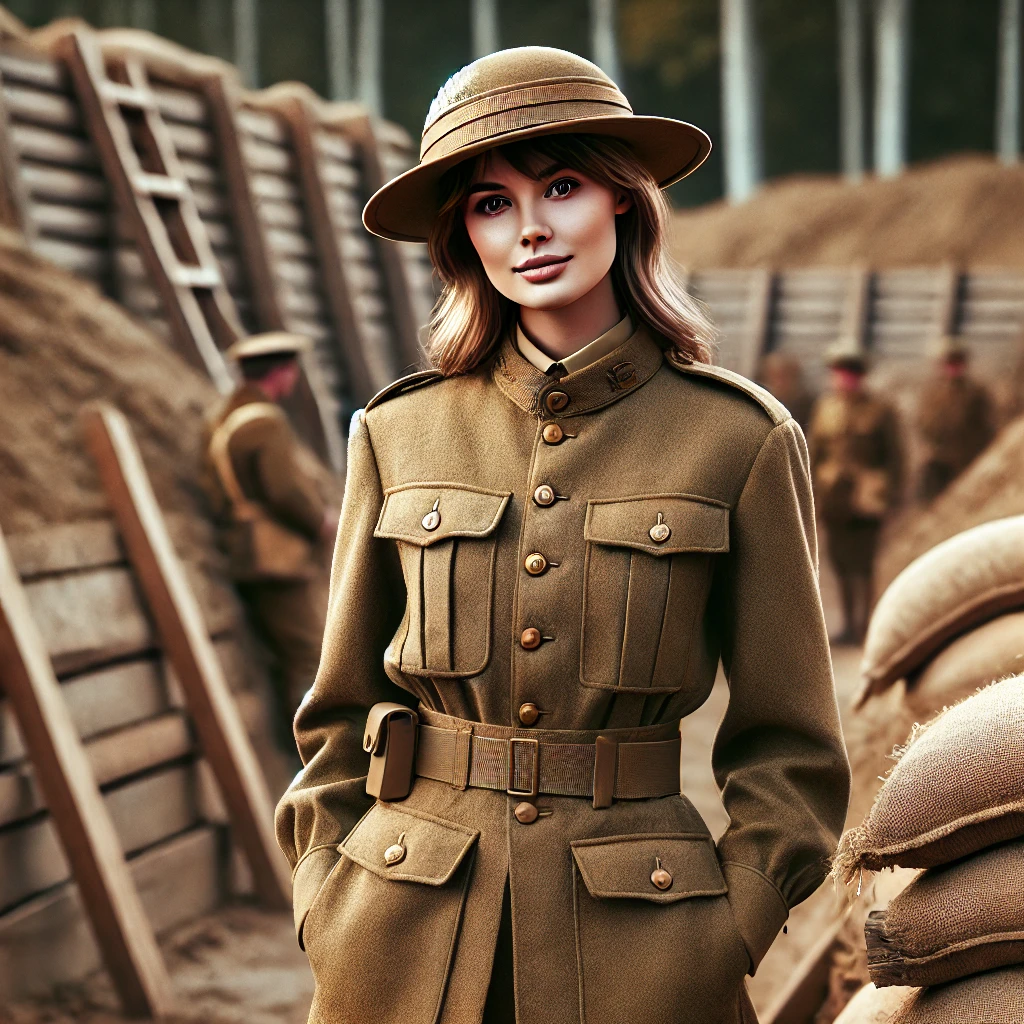
WWI British Military Uniforms: An Investigation of Legacy
Published on Jan 06, 2025
The world as we knew it underwent a lot of changes and innovations in World War I, particularly with how the warfare aspect had become modernized and enhanced rapidly. One key component of such an era were the uniforms for the soldiers. WWI British military uniforms still serve as the best representations of the courage and tenacity that characterized the British Expeditionary Force. These uniforms served not only as practical clothing but also represented the identity and heritage of the soldiers. In this article, we explore the interesting aspects of these uniforms, their importance to history enthusiasts, collectors, and reenactors.
Key Features of WWI British Military Uniforms
A soldier during the Great War could not get by without wearing his British army WWI tunic. These tunic uniforms were designed to function and last the test of the trench warfare their designs are a testament to some of the notable features:
• Design: The standard-issue tunic made of khaki wool was not only practical but also symbolic, as its tough material provided warmth and protection to the soldier while its color presented camouflage on the battlefield.
• Pockets and Buttons: There were four large pockets on the tunic. This was an excellent place to store important things, such as candies, coins, or a photo of the wife. The brass buttons were the regimental insignia.
• Puttees: Long strips of woolen cloth, called puttees, wound around the lower legs to support and protect them from mud and cold.
• Cap and Helmet: The soft Service Dress cap gave way to the steel Brodie helmet, providing greater protection from shrapnel.
WWI Reenactment Authentic WWI Costume for History Enthusiasts
For those passionate about history, an authentic WWI reenactment costume is a piece of history brought to life. These costumes mirror the original uniform with a dedication to accuracy in every detail.
• Materials: The reproduction uniforms are made from the same khaki wool as the original ones to be authentic.
• Accessories: Some of the key WWI uniform accessories include leather belts, ammunition pouches, and water bottles.
• Insignia and Badges: The reproduction uniforms include all the regimental badges and insignia so the reenactors can represent particular units of the British Expeditionary Force.
World War One Reenactment Gear
Participating in WWI reenactments is a great way to pay tribute to the sacrifices of soldiers. To achieve a realistic representation, enthusiasts depend on high-quality World War One reenactment gear. This includes:
• Field Equipment: Mess tins, entrenching tools, and haversacks.
• Weapons: Reproduction rifles, bayonets, and other weaponry are integral to completing the soldier's kit.
• Footwear: Sturdy leather boots are an essential component, designed for both practicality and historical accuracy.
British Expeditionary Force Uniform
A special place exists in military history to the British Expeditionary Force uniform. The BEF was the first fully professional army Britain, and its uniforms reflected this distinction as well. This included:
Sam Browne Belt: Worn by officers only, this is a leather strap with a shoulder strap, defining authority.
Officer's Tunic: They were a shade different from what the standard issue soldier wore tunic, better materials, extra embellishments to it.
Rank Insignia: On the sleeves, rank and unit insignias were very conspicuous.
Appeal of Reproduction WWI Army Uniforms
To the collector or enthusiast, a reproduction WWI army uniform can be an ownership opportunity in a piece of history. Reproduction WWI army uniforms are not just costumes, but precision replicas to reflect original designs.
• Educational Purpose: For educating the masses and students in schools, these are used in museums and for such events.
• Cultural Event: The historical reenactment of the period or the thematic exhibition would require these reproduction uniforms.
• Personal Collection: There are some people who hold such replicas dearly for their collection.
How to Select the Best WWI Soldier Costume
When choosing a WWI soldier costume, quality and authenticity are the most important things to consider. Here are some tips:
1. Research the Era: Understand the specific regiment or unit you wish to represent. Each had unique insignia and variations in uniform design.
2. Check the Materials: Look for uniforms made from high-quality wool and leather to ensure durability and authenticity.
3. Accessories to Complete the Attire: Do not forget helmets, belts, and boots to get a complete image.
4. Purchasing from Credible Sellers: Websites such as Paddelaters sell historically accurate replicas, ensuring that you get your money's worth.
Why Uniform Accessories for WWI Are Important
No soldier's uniform is complete without the right accessories. From belts and buckles to haversacks and water bottles, WWI uniform accessories played a crucial role in a soldier's daily life. For reenactors and collectors, these details add authenticity and depth to their portrayal.
Conclusion
The WWI British military uniforms are more than just garments they are a testament to the bravery and sacrifices of the soldiers who wore them. Whether you are a historian, collector, or reenactor, research in these uniforms provides a more in-depth knowledge of the Great War and its impact on military history. With investment in authentic WWI reenactment costumes, reproduction uniforms, and accessories, you honor this legacy and keep history alive for future generations. For the best replicas and gear, check out Paddelaters and browse through their extensive collection.
